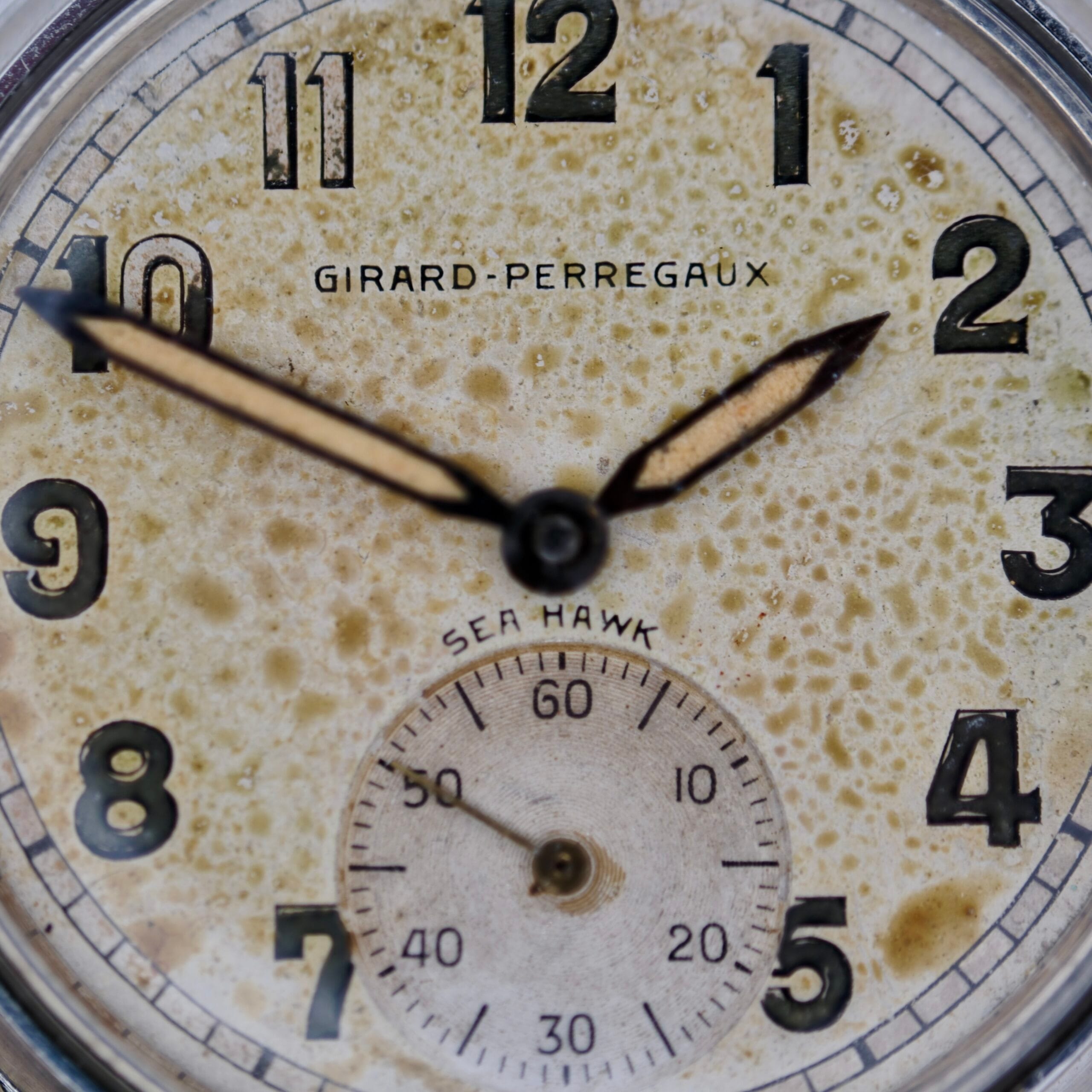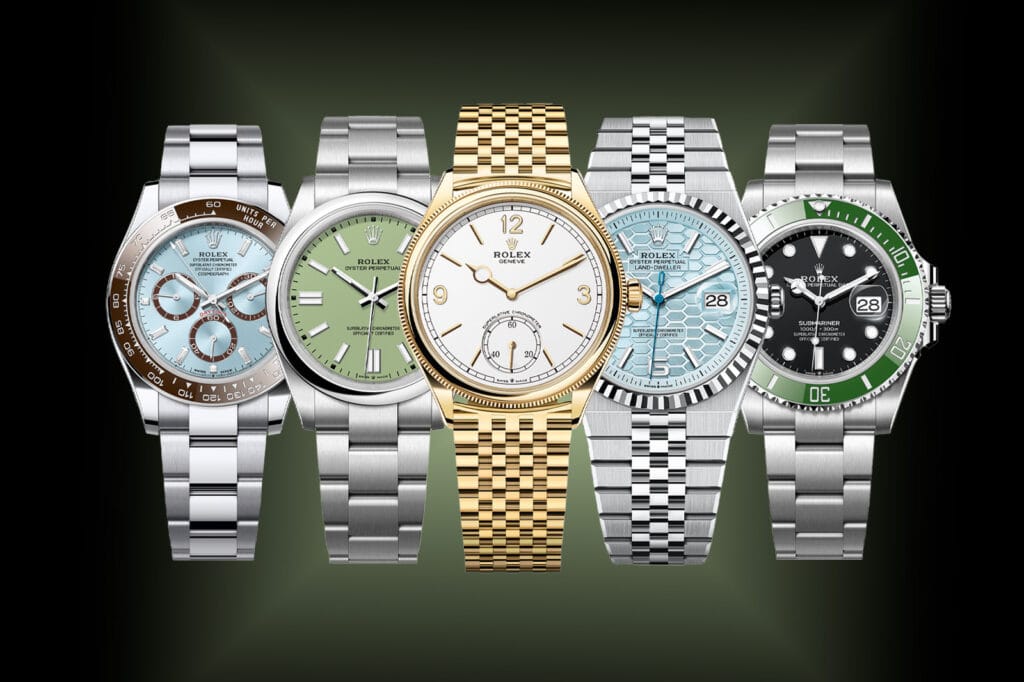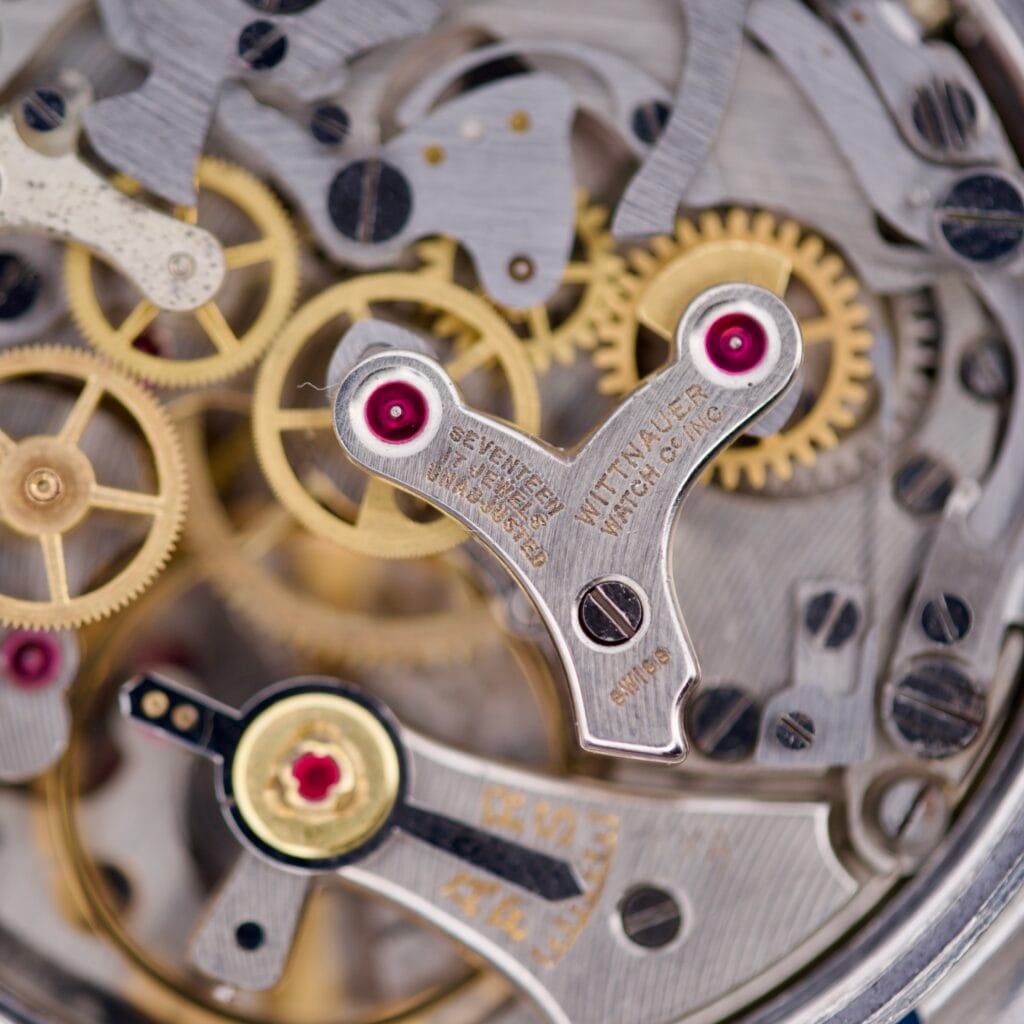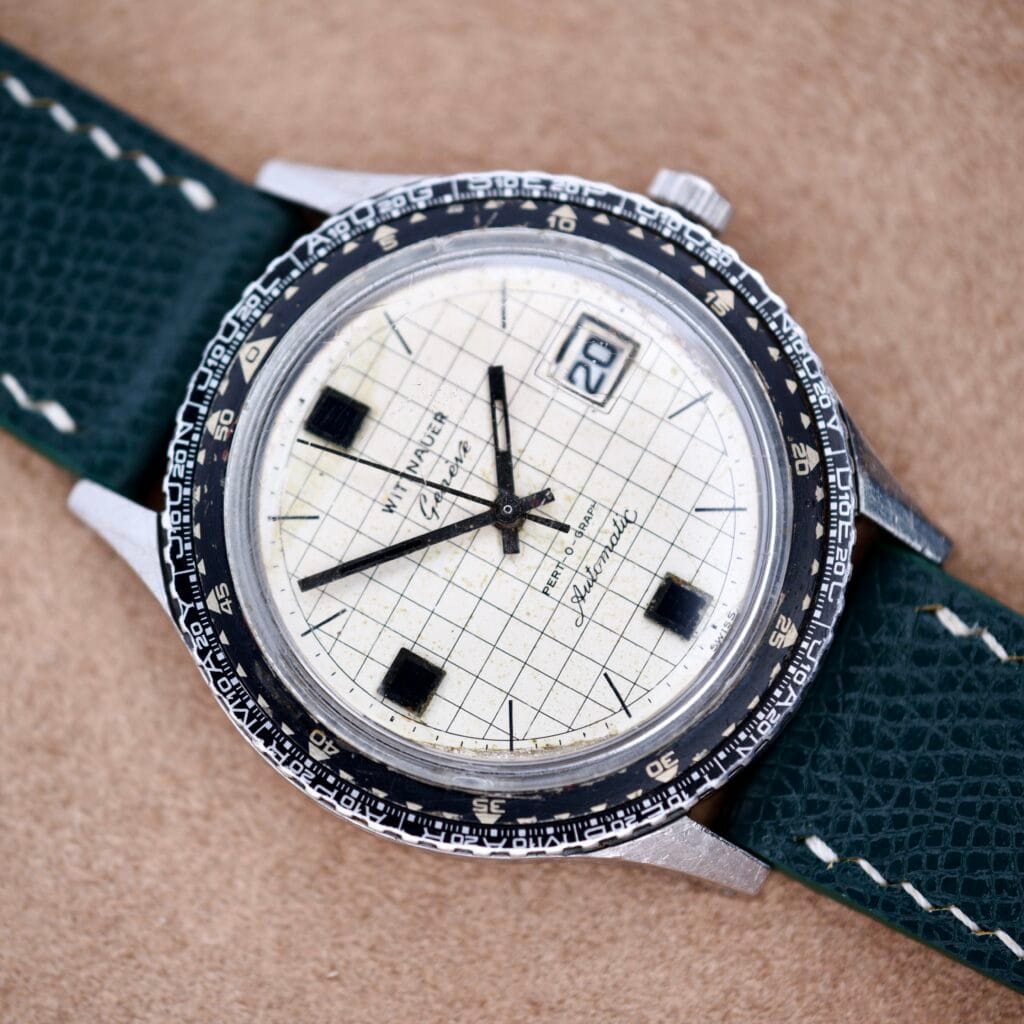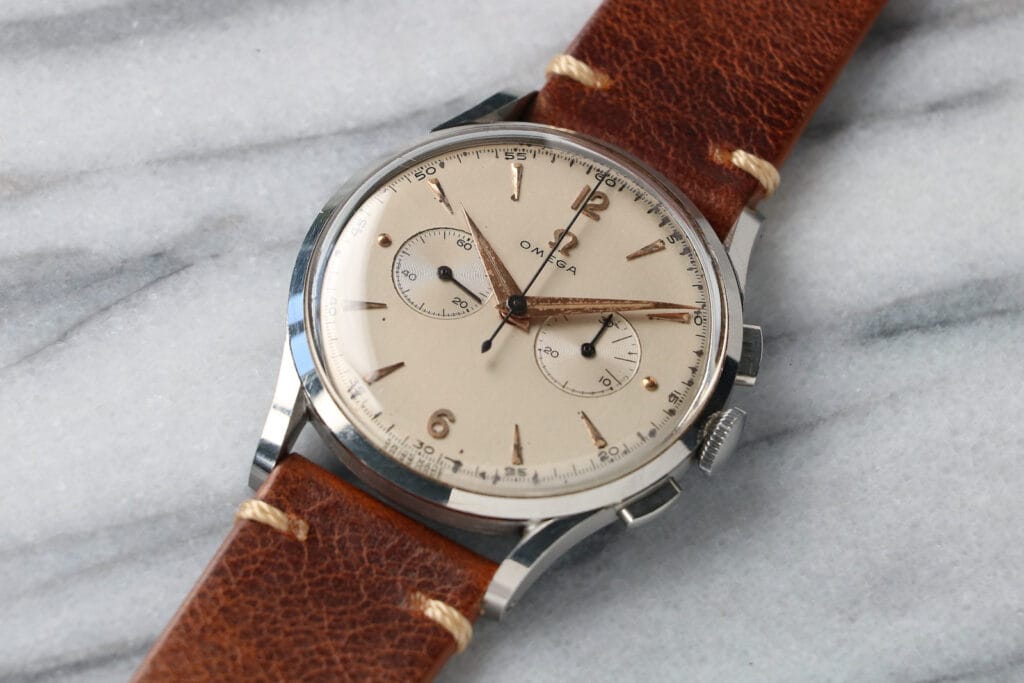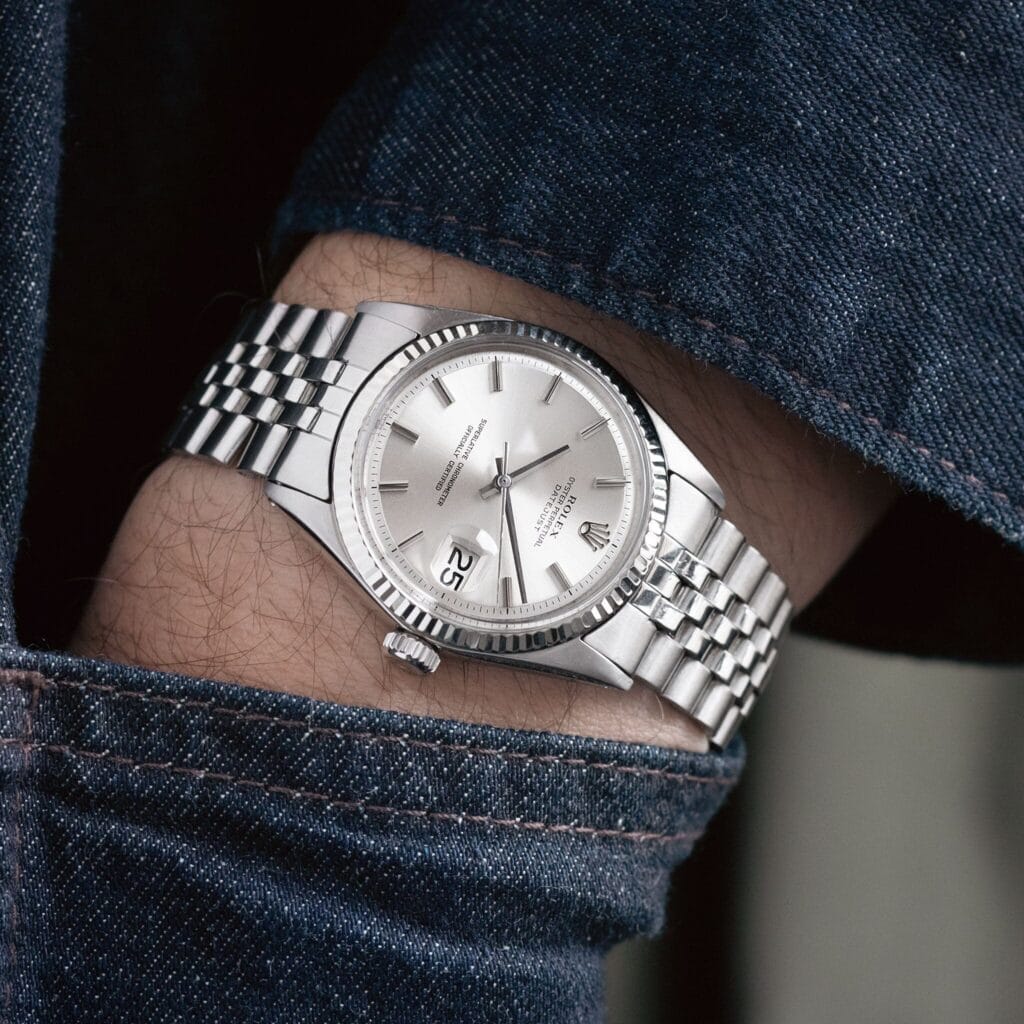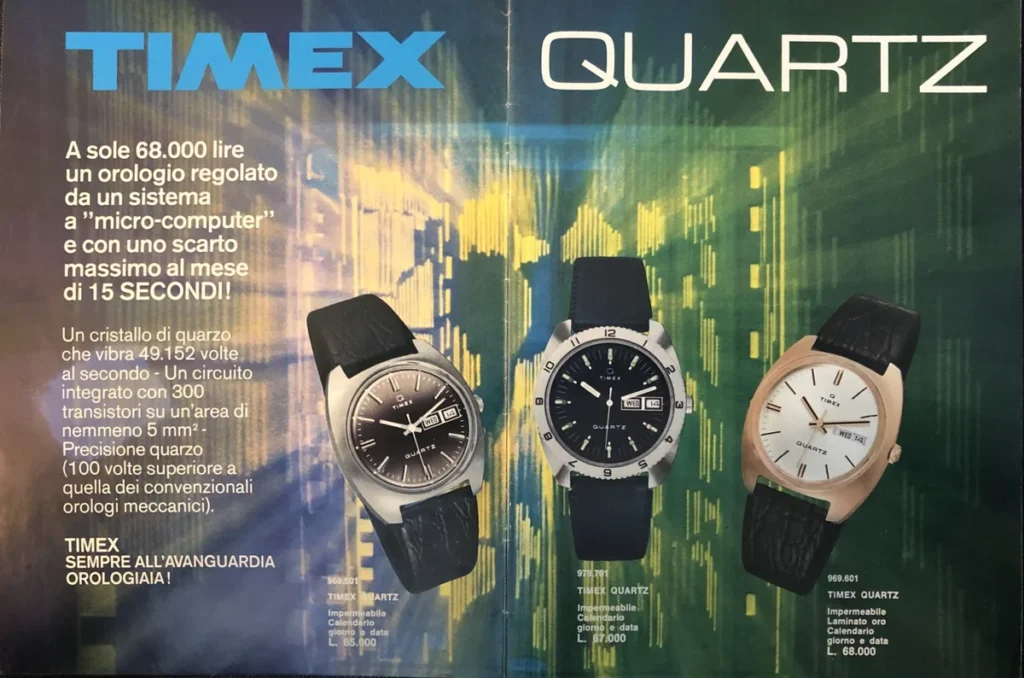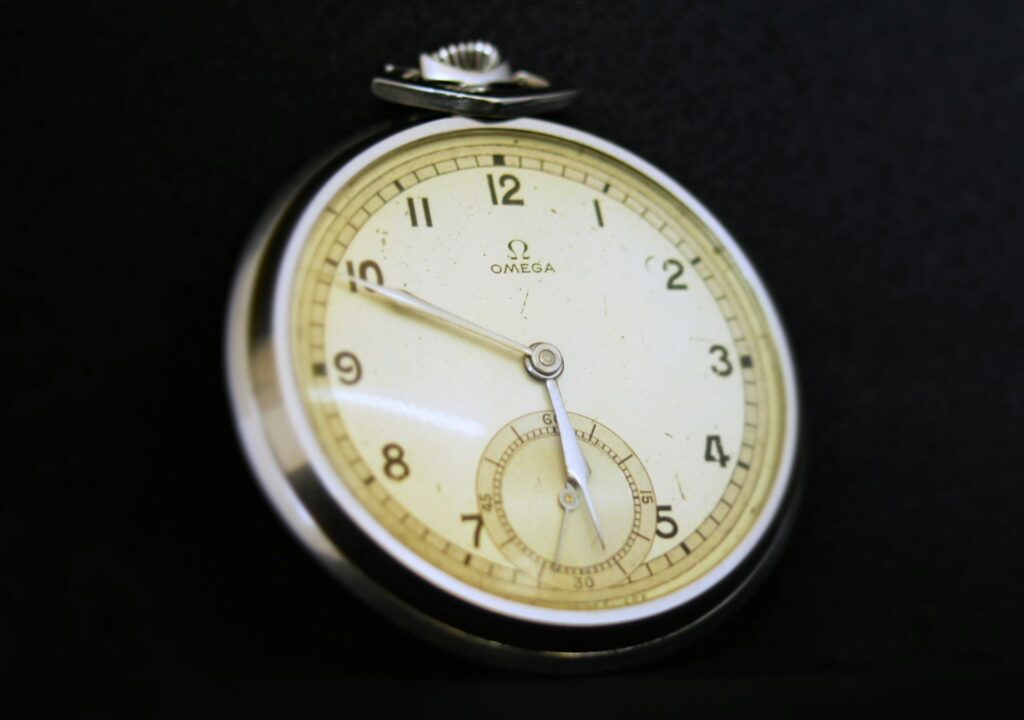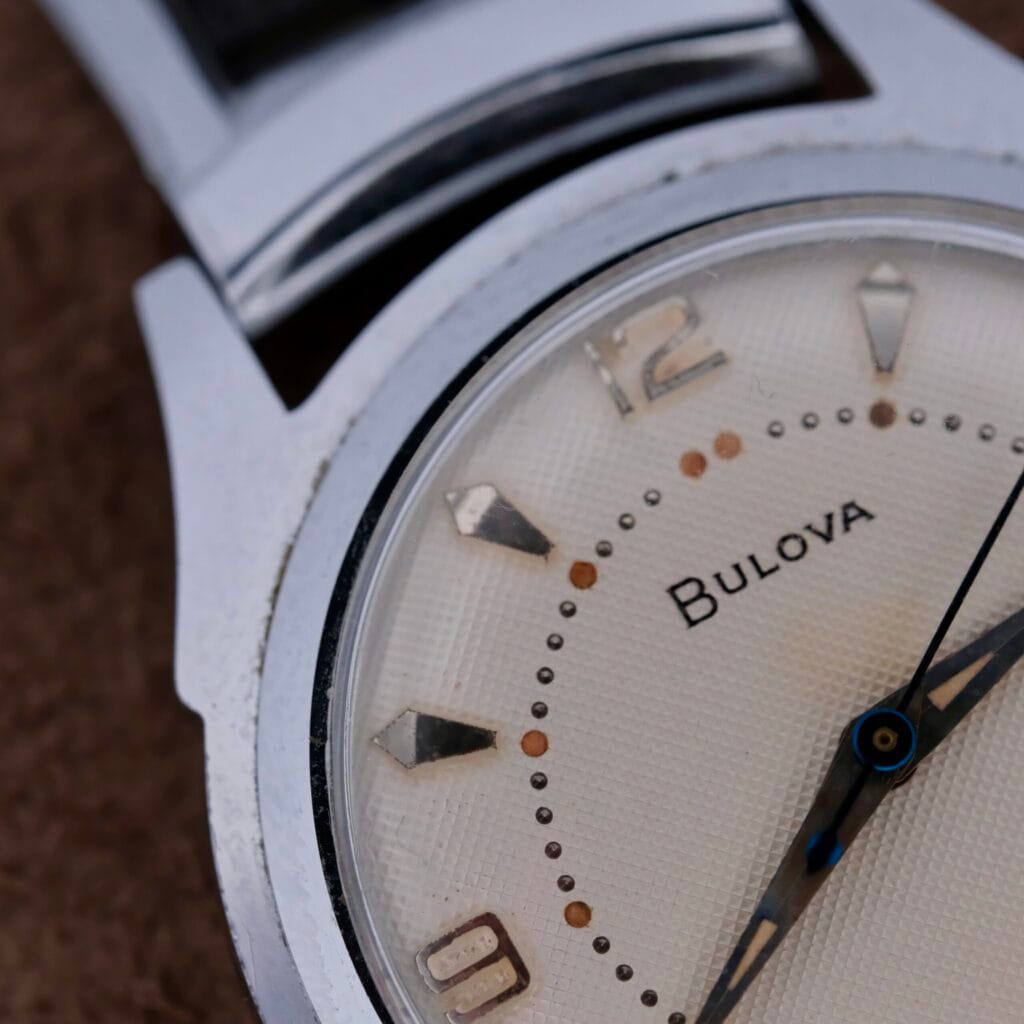Don't miss the next drop
Among vintage watch enthusiasts and collectors, one of the most debated topics revolves around patina and damage. What sets the two apart? When does a beautifully aged watch dial cross into the territory of wear and tear? And why is patina celebrated while damage is rebuked?
To answer these questions, we’ll break down what patina is, define damage on a watch dial, and explore how to draw a distinction between these two terms. Finally, we’ll land on a simple truth about collecting vintage watches that every enthusiast should keep in mind.
What is Patina?
The term “patina” originates from the world of art and antiques, describing the natural aging process of materials like metal and wood. When it comes to vintage watches, patina refers to the gradual aging of a watch dial, bezel, or other components, resulting in unique characteristics that develop over time.
Patina is the result of time, environment, and wear. Exposure to sunlight, moisture, and air gradually transforms materials. On a watch dial, this might look like tropical browning, where the original color of the dial subtly shifts to varying shades of brown. Luminous elements, such as tritium or radium used in vintage watches, often age into soft, creamy tones. Metals may take on a matte finish or develop a subtle tarnish.

Is Patina Desirable?
For many collectors, patina tells a story. It represents a watch’s life, personality, and authenticity. A beautifully aged patina doesn’t just signal age; it signals character. Watches with an even, aesthetically pleasing patina can fetch higher prices at auctions and among collectors. For example, a Rolex Submariner with “tropical” dial patina is often more sought-after because of its rarity and visual appeal.
Patina gives vintage watches their soul, reflecting decades of wear that make each piece one of a kind.
What is Damage on a Watch Dial?
While patina is celebrated, damage is unwanted and often diminishes a watch’s value and desirability. But the line between patina and damage can sometimes be blurry.
Water Damage
Water damage often leaves behind unsightly stains or black, mold-like spots on the dial. This occurs when water infiltrates the watch case, harming both the aesthetics and functionality of the piece.
Scratches and Gouges
Physical abrasions to the surface of the dial, whether from poor handling or accidents, can disrupt the original appearance of the watch. Deep scratches are particularly detrimental, as they can be difficult or impossible to repair.
Fading or Wear to Printing
Over time, the text on a dial (such as brand logos, model references, or minute tracks) can fade or wear off, leaving it incomplete. This often happens due to improper cleaning or excessive dial exposure to cleaning agents.
Corrosion or Flaking
Corrosion caused by moisture or poor storage conditions can lead to flaking paint, peeling lacquer, or outright damage to a metal dial.
How to Tell the Difference
Patina often appears even and consistent, such as when a dial’s pigmentation darkens uniformly over time. Damage, on the other hand, is usually uneven. For example, water damage may result in blotchy spots or streaks, while scratches are often localized.
Patina adds beauty. Damage detracts from it. An aged, tropical dial that has transitioned to chocolate brown is visually captivating, but water stains or flaking are major turn-offs.
Patina is purely aesthetic and does not affect the watch’s ability to function. Damage, such as corrosion to internal components, poses a greater threat by impacting the mechanics or usability of the timepiece.
Patina is often tied to rarity, making it desirable. For example, “Spider dials” on Rolexes, where the finish cracks into web-like patterns, were once considered damage. Today, they’re viewed more positively as an indication of the watch’s vintage authenticity. Damage, however, isn’t tied to rarity; it’s merely a sign of poor preservation.

At the End of the Day, It’s Your Call
At its core, patina is simply an aesthetically pleasing type of damage. Both patina and damage stem from age, exposure, and wear—but the difference lies in their appeal. A watch collector’s preference for patina over damage often boils down to one straightforward question: “Is it attractive to you?”
Some collectors revel in the natural beauty of a faded brown Submariner dial or creamy tritium hour markers. Others prefer pristine timepieces that look close to how they did when brand-new. There is no universal standard for beauty in watch collecting; it’s all about what sparks joy for each individual collector.
Ultimately, whether you adore patina or avoid any signs of wear, the beauty of collecting vintage watches lies in celebrating their history, quirks, and imperfections.
About Garrett Silverstein
View all posts by Garrett SilversteinRelated posts
The Ultimate Guide to Vintage Omega Seamasters
Vintage Omega Seamasters represent one of the most compelling propositions in watch collecting today - offering military provenanc...
The Expert’s Guide to Rolex Serial Numbers and Reference Numbers
Understanding Rolex serial numbers is essential for any Rolex enthusiast, collector, or potential buyer. These unique identif...
The Collector’s Guide to Vintage Wittnauer Chronographs
Vintage Wittnauer chronographs represent one of the most compelling value propositions in the world of mid-century timepieces. While br...
Wittnauer Pert-o-Graph Ref. 7005: An Analog Computer for the Project Manager’s Wrist
Wittnauer Pert-o-graph, tool watch or something else? In the history of horology, the "tool watch" has traditionally been defined by it...
The Expert’s Guide to Buying Vintage Watches on eBay In 2025
eBay, to the aspiring watch collector, is a landscape of profound contradiction. It is a digital bazaar of immense scale, a place where...
Complete Guide to the Rolex Datejust 1601
In the grand pantheon of horology, few timepieces command the same blend of understated elegance, historical significance, and everyday...
How the Quartz Crisis Nearly Ended Swiss Watchmaking
Before the quartz crisis (1970s), the Swiss watchmaking industry stood as an unshakeable colossus, a global symbol of precision, intric...
An Expert’s Guide to Omega Reference Numbers
Omega's rich horological history, stretching back to 1848, has produced an astonishingly diverse and extensive catalogue of timepieces....
Patina vs. Damage on a Watch Dial
Among vintage watch enthusiasts and collectors, one of the most debated topics revolves around patina and damage. What sets the two apa...
How Old Is My Bulova Watch? Production Date Guide
Bulova, one of the first companies to mass-produce wristwatches in the early 20th century, has made it easier than most to identify the...
Transform Your Watch in Minutes: A Guide to Watch Straps
Your watch says as much about you as your outfit does. With a simple swap of a strap, you can transform a single watch into something f...
Recent Posts
- The Ultimate Guide to Vintage Omega Seamasters
- The Expert’s Guide to Rolex Serial Numbers and Reference Numbers
- The Collector’s Guide to Vintage Wittnauer Chronographs
- Wittnauer Pert-o-Graph Ref. 7005: An Analog Computer for the Project Manager’s Wrist
- The Expert’s Guide to Buying Vintage Watches on eBay In 2025
Recent Comments
No comments to show.

